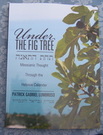For this perishable body must put on the imperishable, and this mortal body must put on immortality.
Three days is such a repeated theme in the Torah. It is on the third day that Abraham and Isaac climbed the mountain (Gen. 22:4); Israel had to purify itself then God came in their sight on Mt. Horeb after three days(Exodus 19:16); Jonah was spewed out of the fish after three days (Jonah 1:17); Joshua crossed the Jordan as on dry land on the third day (Joshua 3:2,17), and the remainder of the flesh of any offering needed to be burned after three days (Leviticus 7:17).
The theme of the third day denotes of resurrection, of corruptibility putting on incorruptibility (1 Cor. 15:53). It is also on the third day that the Master rose (Matt. 16:21), that there was a wedding in Cana (John 2:1), and the two witnesses are raised up after three and half day (Rev. 11:11).
On the other hand, Yeshua waited four days to go to Lazarus (John 11:17). The Master wanted to wait that long because the third day is actually the time when unrefrigerated meat starts to decompose (John 11:39). The disciples hesitated to open the tomb not only because of the smell, but it represented a desecration and exposure to uncleanliness. Even in the Temple, meat from peace offerings was not allowed to remain on the altar more than three days; after that it had to be burned (Lev. 7:16—18). The Master waited till the fourth day so the people would know that Lazarus was truly dead and not just sleeping.
The three daysWHEN theme speaks to us of the most wonderful process and miracle in our redemption program: that of corruptibility putting on incorruptibility. The corruptible is transformed into an incorruptible state before it is allowed to decompose. This also represents the greatest promise Hashem made to his people. Through the prophet Hoseah came the following words for an apostate Israel who would soon face exile and deportation,
Come, let us return to ADONAI; for he has torn us, that he may heal us; he has struck us down, and he will bind us up. After two days he will revive us; on the third day he will raise us up, that we may live before him (Hos. 6:1-2).
One day for God is 1,000 years. In the third millennia of exile, Israel is resurrected to its former Salomonic grandeur as when nations brought their glories to Jerusalem and came to learn from the wisest king in the world. We can see the beginning of it even now.
All these scriptural themes foreshadow our passing from mortality to immortality, from the corruptible to the incorruptible, from death to resurrection.
May we always live in the understanding of these things. No matter what life throws at us in what seems at times tsunamis of troubles, may we as Children of the Most-High be perfect (Matt. 5:48) and not have a morbid attitude towards the ending of our temporal passage in this dimension. May we always remember that the end of the vanity of our sad temporal life is fullness of eternal joy; that the end of death is life and that in due time, corruptibility puts on incorruptibility; death is swallowed up by life.
 RSS Feed
RSS Feed


